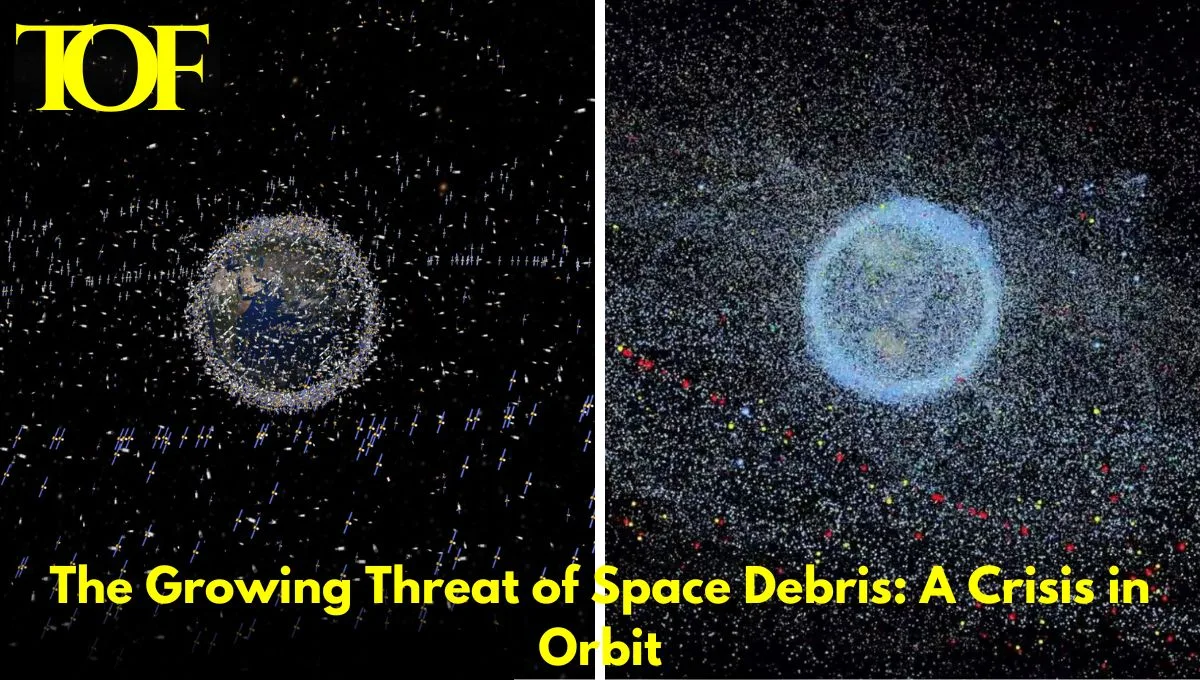With increased dependence on satellites and space exploration, so too is the risk from the ever-increasing problem of space debris: the potential to cause catastrophic harm. In November, the International Space Station narrowly escaped an orbital piece of debris by way of an emergency trajectory correction maneuver executed via a Russian spacecraft. The debris, without the correction maneuver, would have had the possibility of passing 2.5 miles away from the station, with the risks to its crew and operation.
This is not an isolated incident. Since the ISS began operating in 2000, evasive maneuvers similar to this have been carried out dozens of times. With the number of artificial objects in Earth’s orbit multiplying, the threat continues to grow, as over 47,000 tracked pieces of debris are bigger than 4 inches, and millions of smaller pieces.
The Kessler Syndrome: A Nightmare Scenario
The Experts speak of the Kessler Syndrome chain reaction: it can bring an outcome wherein the collision of debris creates further debris, which would leave Earth’s orbit unusable. Initially described in 1978 by the astrophysicist Donald Kessler, the Kessler Syndrome may prove fatal to satellite operations and the very exploration of space itself.
Even though there is debate about the likelihood and timing of such an occurrence, the dangers are real. The biggest short-term threat is in low Earth orbit, which hosts satellites that support internet, GPS, and weather forecasting. A significant collision event in this area could disable key services, jeopardizing both space exploration and modern technologies on Earth.
Monitoring and Controlling the Threat
Today, satellite operators are receiving dozens of collision alerts every day. However, even the most sophisticated systems are not perfect, and the detection of smaller objects like those less than a tennis ball in size often remains impossible. Yet these fragments travel fast enough to cause serious damage. A chip of paint once left a dent in the Space Shuttle Challenger’s window.
This gets worse when the altitudes are at high levels. Debris in low-Earth orbit can naturally re-enter the atmosphere over decades, but debris at altitudes above 500 miles may remain orbiting for centuries. Cleaning up geosynchronous orbit, which is critical to communications satellites, is practically impossible.
Efforts to Mitigate the Crisis
Several initiatives have been put into place to help address the issue of growing debris. Debris removal technologies, for instance, include drag sails, which utilize atmospheric drag to bring debris back into the atmosphere. In 2022, the European Space Agency released a prototype of a drag sail, although it is very expensive and still only in its developmental stages.
There’s also regulation: a great area of interest. On paper, international accords from the United Nations’ “Pact for the Future” aim to promote responsible behavior in space, yet mechanisms for enforcing them remain weak. Some argue nations like the United States need to lead the way in enacting stricter laws in order to effectively regulate traffic in space and how it goes about managing debris.
What a comparison to be drawn from space debris into Earth’s oceans: Both are results of assumptions regarding unlimited capacity and immediate unaccountability. “We used to think the oceans were infinite. Now we realize those are finite resources. Space is no different,” said Dr. Nilton Renno, University of Michigan.
Unless addressed promptly, the threat of space debris will continue to worsen. International cooperation, stringent regulations, and innovative clean-up technologies must be put into place to maintain access to space—a limited and shared resource critical for human development and survival.
Extra Case: Recent finds in Haywood County show how debris in space impacts Earth in very physical ways. A piece identified to belong to SpaceX was discovered at the top of a mountain, as happened with a similar occurrence in Canada and Australia. This type of scenario points out how there’s a real crisis on the issue.
With the rapid increase of the space age, global leaders, private companies, and international organizations need to share the burden of taking care of the orbital environment.
To Read More: Technology

